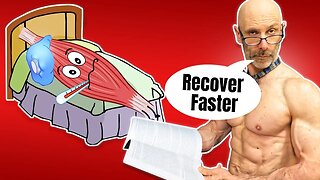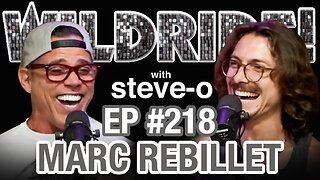Grow Your Calves At Home
Grow your calves at home
So many people think it can’t be done. Our calves are genetic and there is nothing we can do about it. Today we are going to talk a little bit about genetics, but the main reason your calves aren’t growing is either one you aren’t training them or two your not using the two main ways we need to train them in order to get complete development.
The two main muscles we want to work when building our calves are the gastrocnemius which has 2 heads, the medial is on the inside of our calf and lateral head is on the outside.
The soleus is the second muscle and it is a large muscle that is underneath the gastrocnemius.
If you are interested in losing body fat and adding muscle, please email me at 1shark1bite@gmail.com for information on my personal training services.
Check your testosterone levels from home. Just click this link http://trylgc.com/laurence and receive 20% off with code: LAURENCE20 I receive commissions on referrals to LetsGetChecked. I only recommend services I know and trust.
My Affiliate link to Lebert for their Equalizer bars and more; https://lebertfitness.com/?ref=hmkesu... and use the discount code FITAND50 you will receive 20% off your purchase
Facebook; https://www.facebook.com/Fit-and-50-5...
My Amazon page link; https://www.amazon.com/shop/fitand50
When we do a calf exercise with our knees straight for example as we do in a standing calf raise. We mainly emphasize the gastrocnemius. On most people, this muscle has a fairly even split between fast and slow-twitch fibres meaning it will benefit from both higher rep training and some low rep heavy work.
If you haven’t been training your calves a good place to start is on a step. I would use bodyweight at first. Focusing on a full range of motion you want to go slow and really feel the stretch in the bottom position sometimes it takes a few reps before you can get that full stretch, then go up into the top position and get right up on your toes so that the balls of your feet are above the step.
Since we are on the bottom step we might as well start working our way up. The staircase in my house has 15 steps and I do 5 reps on each leg alternating from one leg to the other. Once I’ve completed 5 on each side I move up to the next step and repeat until I reach the top of the stair for a total of 75 reps per side. This can be repeated every other day allowing for a recovery day in between.
When you start to add weight make sure you are still doing a full range of motion at a slower pace because you can move some pretty impressive weight through a part range, but you will be denying yourself of complete development.
If for some reason you have absolutely no steps in your house. you can do a leaning single leg calf raise. These are better than standing straight while doing a calf raises as the lean provides a better stretch. Making the movement more effective and the leaning position makes me think of the drive phase of a sprint. Anytime you can work a muscle in the position it is going to be used is always a plus.
Before we go into some great exercises for the soleus, I want to talk about an old school exercise for the calves that we’ve seen lots of pictures of Arnold doing with one, two and sometimes even three people on this back and that is the donkey calf raise.
I wouldn’t recommend having people sit on your back to start. But what makes this exercise so good is when you bend forward with your waist at a ninety to your legs while keeping you legs perpendicular to the floor it creates an even greater stretch in the calves then a standing calf raise.
Straight leg calf raises are a must for working the gastrocnemius muscle but are not the best way to work the soleus this muscle responds better to bent knee exercises like seated calf raises, so we need to have both a straight leg version and a bent knee variation in order to have complete calf development.
Now we are just going to take a second to talk about genetics because the soleus is a muscle that responds better to high rep training with around 89% of the muscle fibres typically being slow twitch. Which don’t grow as well as fast-twitch fibres, but they still grow.
Some people are blessed by the gods of great calves with a higher ratios of fast-twitch fibre than others who are just born with long thin calves and more slow-twitch fibres limiting how much growth you can achieve but they still will grow.
Another bent knee variation you can do for your soleus is the half kneeling calf raise. The thing you really need to watch with this exercise is to keep your foot back underneath you. You don’t want your shin to be at 90 degrees to the floor again you are looking for that stretch in your calf.
When it comes to building muscle on our legs who wouldn’t want more muscular quads watch this video next to find out how you can build your quads at home.
-
 4:53
4:53
Fit and 50
7 months ago $0.07 earnedHow to Speed Up Muscle Recovery Over 50 (Recover Like a 20 yr old)
3554 -
 3:31:12
3:31:12
SNEAKO
7 hours agoSNEAKO X AKADEMIKS X ZHERKA
74.6K46 -
 2:22:57
2:22:57
Fresh and Fit
7 hours agoWhat Women THINK Men Want Debate w/ Girls
89.7K109 -
 3:31:00
3:31:00
GoodLawgic
7 hours agoThe Following Program: YSL Case EXPLODES When Defense Counsel Is JAILED
21.8K18 -
 8:20:15
8:20:15
Akademiks
11 hours agoYB sends message from Jail. Drake new song. Post Beef Report? Kendrick show in LA? YSL Trial wild!
112K17 -
 43:38
43:38
Bright Insight
16 hours agoYou Won’t Believe This Disturbing Gobekli Tepe Update
103K245 -
 18:06
18:06
Stephen Gardner
8 hours ago🔴Nancy Pelosi's lies FALL APART as J6 video confession LEAKS!!
39.1K131 -
 1:48:28
1:48:28
Kim Iversen
9 hours agoCourt Rules Covid Vaccines Are NOT Vaccines, Kim Listed On New Ukraine "Enemies List”
62.5K210 -
 1:11:45
1:11:45
Steve-O's Wild Ride! Podcast
4 days ago $0.19 earnedMarc Rebillet Is Out Of His Goddam Mind - Wild Ride #218
38.7K7 -
 27:43
27:43
Man in America
13 hours agoBREAKING: Saudis Officially END Petrodollar as BRICS Makes HUGE Announcement w/ Dr. Kirk Elliott
49.5K28